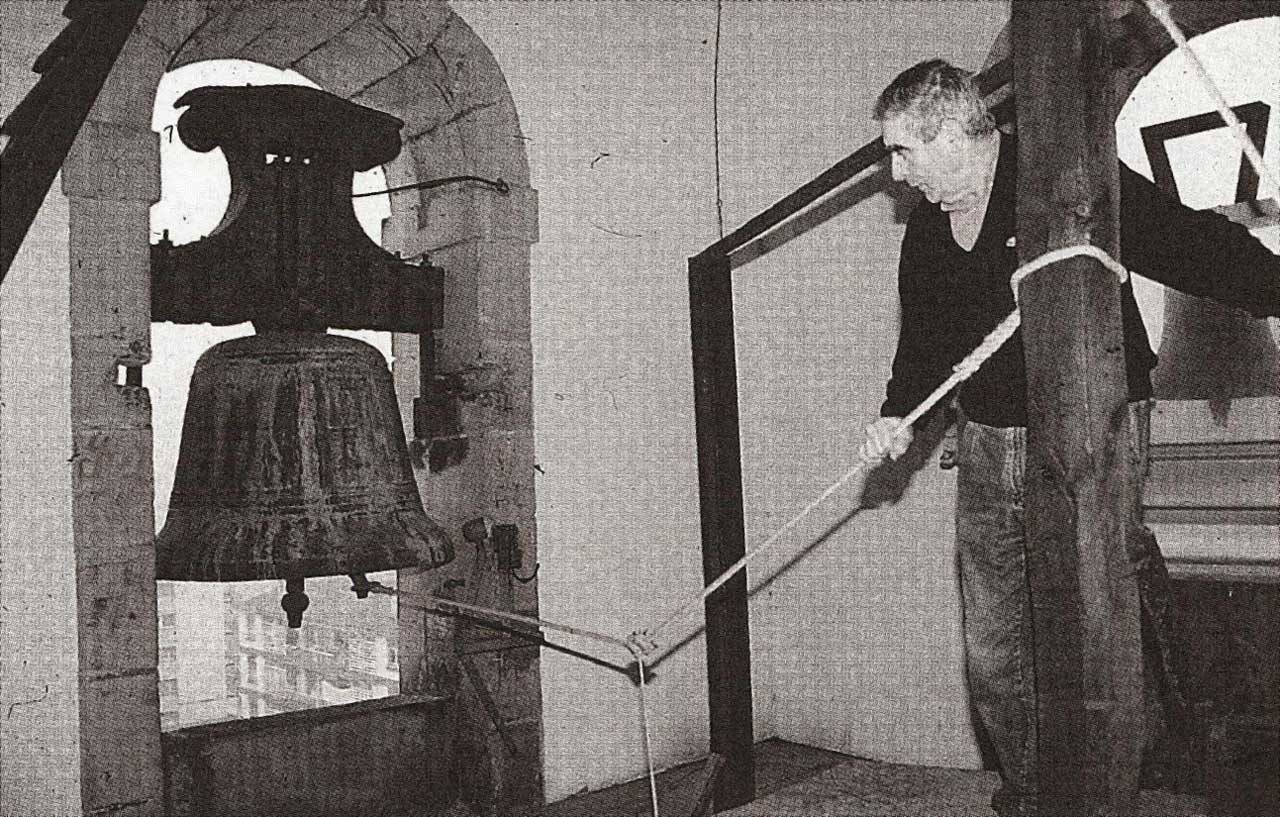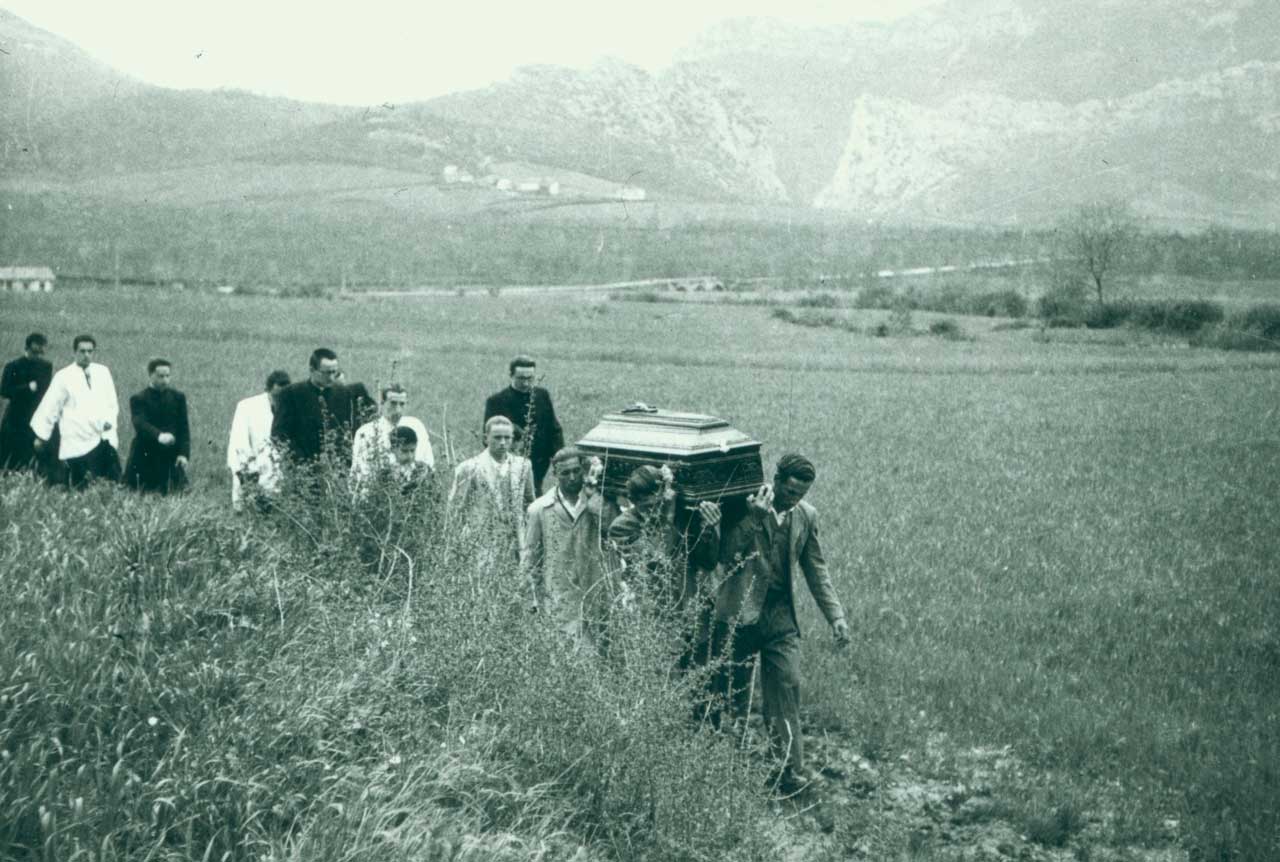Diferencia entre revisiones de «Ritos funerarios en vasconia/en»
De Atlas Etnográfico de Vasconia
(Página creada con «====[/atlas/ritos/Sepulturas-en-la-nave-de-la-iglesia-Amezketa-1990.jpg|Symbolic graves in church. Amezketa (G), 1990. Source: Antxon Aguirre, Etniker Euskalerria Groups.|E...») |
(Página creada con «====[/atlas/ritos/Toque-de-campana-anunciando-la-muerte-Beasain.jpg|Death knell. Beasain (G). Source: José Zufiaurre, Etniker Euskalerria Groups.|Tolling the bell was a ve...») |
||
| Línea 22: | Línea 22: | ||
====[/atlas/ritos/Sepulturas-en-la-nave-de-la-iglesia-Amezketa-1990.jpg|Symbolic graves in church. Amezketa (G), 1990. Source: Antxon Aguirre, Etniker Euskalerria Groups.|Each homestead used to have a burial site inside the church’s nave. When burials were transferred to cemeteries, the once real burial site in church became a symbolic family grave, were offerings of light and bread were made to their dead.||]==== | ====[/atlas/ritos/Sepulturas-en-la-nave-de-la-iglesia-Amezketa-1990.jpg|Symbolic graves in church. Amezketa (G), 1990. Source: Antxon Aguirre, Etniker Euskalerria Groups.|Each homestead used to have a burial site inside the church’s nave. When burials were transferred to cemeteries, the once real burial site in church became a symbolic family grave, were offerings of light and bread were made to their dead.||]==== | ||
| − | ====[/atlas/ritos/Toque-de-campana-anunciando-la-muerte-Beasain.jpg| | + | ====[/atlas/ritos/Toque-de-campana-anunciando-la-muerte-Beasain.jpg|Death knell. Beasain (G). Source: José Zufiaurre, Etniker Euskalerria Groups.|Tolling the bell was a very effective way of announcing the death in rural settlements.||]==== |
====[/atlas/ritos/Cortejo-funebre-1925.jpg|Cortejo fúnebre, c. 1925. Fuente: Antxon Aguirre, Grupos Etniker Euskalerria.|Existían caminos específicos por los que se llevaba el cuerpo del difunto desde la casa mortuoria hasta la iglesia y el cementerio.||]==== | ====[/atlas/ritos/Cortejo-funebre-1925.jpg|Cortejo fúnebre, c. 1925. Fuente: Antxon Aguirre, Grupos Etniker Euskalerria.|Existían caminos específicos por los que se llevaba el cuerpo del difunto desde la casa mortuoria hasta la iglesia y el cementerio.||]==== | ||
Revisión del 09:08 25 feb 2020

Funeral Rites in the Basque Country
Cultural issues surrounding death as a rite of passage, including death omens, death throes and ritual practices after death.
Death knell. Beasain (G). Source: José Zufiaurre, Etniker Euskalerria Groups.



_1995.jpg/1200px-7.86_Salida_de_la_casa_mortuoria._Bera_(N)_1995.jpg)
.jpg/1200px-7.33_La_muerte_del_justo._Litografia_belga_del_s._XIX_procedente_de_un_caserio_de_Ibarruri_(B).jpg)
._(Representacion).jpg/1200px-7.84_Conduccion_del_cadaver_por_el_camino_mortuorio_gorpuzbidea._Orexa_(G)._(Representacion).jpg)
.jpg/1068px-7.259_Antiguo_cementerio_de_Jatsu_(L).jpg)
